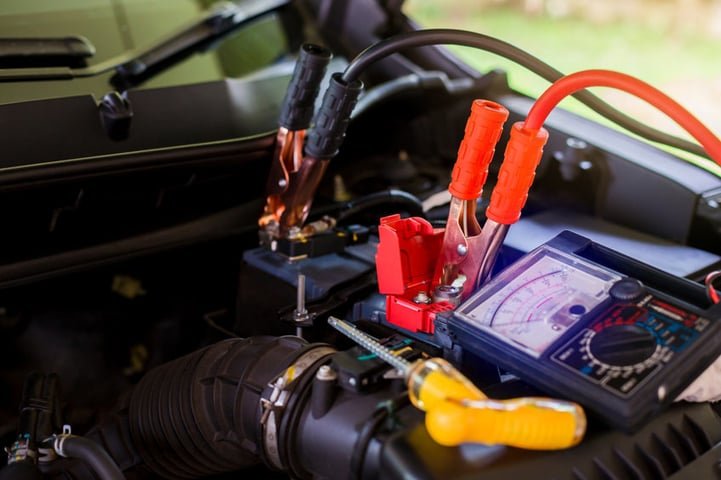Your car’s battery is essential for starting the engine and powering electrical components. A weak or failing battery can leave you stranded. Knowing how to maintain and replace your battery can save you money and prevent unexpected breakdowns.
This guide covers battery lifespan, common charging issues, and how to test or replace your battery.
1️⃣ How Long Does a Car Battery Last?
🔎 Average Lifespan: Most car batteries last 3 to 5 years, but extreme temperatures, driving habits, and maintenance affect longevity.
🚨 Signs You Need a New Battery:
✔ Slow engine crank or clicking sounds when starting.
✔ Dim headlights or weak electrical components.
✔ Dashboard battery warning light is on.
✔ Swollen or leaking battery case.
💡 Tip: Check your battery every 6 months to catch issues early.
2️⃣ Common Car Battery Problems & Solutions
1. Battery Not Holding a Charge
🛠 Causes:
- Old or worn-out battery.
- Loose or corroded battery terminals.
- Faulty alternator not charging the battery.
✅ Fix:
- Tighten and clean terminals.
- Test the alternator and replace if necessary.
- If the battery is over 3 years old, consider replacing it.
2. Car Won’t Start (Dead Battery)
🛠 Causes:
- Leaving lights or electronics on overnight.
- Weak or drained battery due to extreme temperatures.
- Faulty starter or ignition system.
✅ Fix:
- Jump-start the battery and drive for at least 30 minutes to recharge.
- If it won’t hold a charge, replace the battery.
3. Corroded Battery Terminals
🛠 Causes:
- Acid leaks cause white or greenish corrosion buildup.
- Poor connections reduce power flow.
✅ Fix:
- Clean terminals with baking soda and water.
- Apply anti-corrosion grease to prevent future buildup.
3️⃣ How to Test Your Car Battery
🔎 Ways to Check Battery Health:
✔ Multimeter Test: A healthy battery should read 12.6V or higher when the car is off.
✔ Load Test: Measures how well the battery holds power under stress.
✔ Battery Health Indicator: Many modern batteries have a built-in charge indicator.
💡 Tip: If your battery voltage is below 12.4V, it may need charging or replacement.
4️⃣ When & How to Replace a Car Battery
📌 When to Replace:
✔ If your battery is older than 3-5 years.
✔ If it fails a load test or won’t hold a charge.
🛠 Steps to Replace a Battery:
- Turn off the engine and wear gloves for safety.
- Disconnect the negative (-) terminal first, then the positive (+).
- Remove the old battery and install the new one.
- Connect the positive (+) terminal first, then the negative (-).
- Tighten and secure all connections.
🚨 Caution: Some cars require battery registration or ECU resets after installation.
Need a New Battery? Visit Onsite Auto Services!
🚗 Is your battery weak or failing? Our technicians at Onsite Auto Services offer professional battery testing, replacement, and charging system checks to keep you on the road.
📞 Call us today or schedule an appointment online for a battery check or replacement!
“Learn how to extend battery life, prevent charging issues, and test your car battery. Get expert tips on maintenance and replacement.”
CarBattery #BatteryReplacement #HowToTestCarBattery #CarBatteryLifespan #WhenToReplaceBattery #DeadBatteryFix #JumpStartCar #CorrodedBatteryTerminals #CarWontStart #AutoRepairTips #VehicleElectricalSystem #ChargingSystemIssues #MechanicNearMe #BatteryHealthCheck #BestCarBatteries

